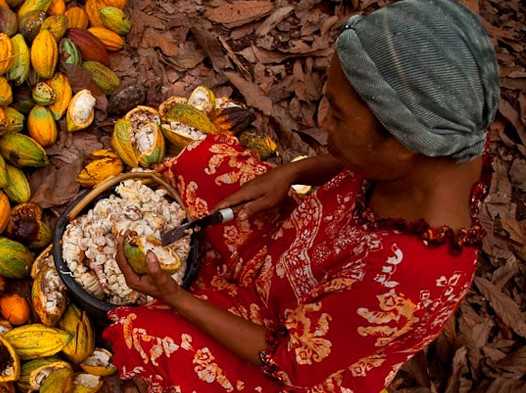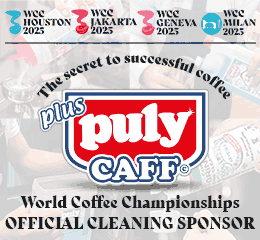To’ak is one of the world’s most expensive chocolates—$270 for just 50 grams. It is chocolate that you are meant to eat with tweezers so your fingers don’t contaminate the flavor. It is chocolate that comes with its own mini novel.
The life of this chocolate begins in Manabí, Ecuador, in a hand-built wooden house, surrounded by clucking chickens, where ants crawl over banisters and the buzz of cicadas mixes with salsa music from the nearby farm.
It’s not how you’d imagine the headquarters of a luxury chocolate brand. But To’ak is not your typical company.
Its founder, Jerry Toth, started out on Wall Street, a world away from chocolate, gumboots, and insect-humming jungles.
He didn’t last long. Within a matter of months, Toth swapped the suit for a backpack and set off for South America.
After “vagabonding” for years, working as a foreign correspondent for AdBusters and dabbling in Chilean wine, Toth started the Third Millennium Alliance, a nonprofit conservation foundation.
It was here that Toth first began experimenting with cacao, and from these experiments came To’ak.
“I would occasionally visit the US for a few weeks. I’d observe people as they ate mass-produced candy bars, which at the time was regarded as chocolate, and this kind of made me sad,” he explains.
“What we had all been eating since [we were] children was just such a far cry from the full-body experience that we enjoyed in our forest preserve in Ecuador. To’ak was a reaction to those moments.”
So Toth teamed up with local farmer Servio Pachard and Austrian designer Carl Schweizer “to bring chocolate to people in a much higher, experiential form.”
And in 2014, the first line of To’ak chocolate hit the market. Almost immediately, the exorbitant asking price made headlines ,with the media declaring it the world’s most expensive chocolate.
So, why so pricey?
You might think: Wall Street banker, humble Ecuadorian farmers, and a whopping $270 chocolate bar. You might think: exploitation.
But the team at To’ak insist the hefty price tag comes down to one thing: cacao.
Schweizer explains, “There are other chocolates, truffles, bonbons that cost $10,000 for a box, but it is because either they come with gold pieces or a jewel. The protagonist in the end isn’t the cacao. For us, the protagonist is nature itself. For us, the primary material is the most important.”
To’ak’s chocolate comes from Piedra de Plata, the home of 100-percent pure cacao nacional, one of the oldest and rarest varieties of cacao.
For many years, this sun-drenched valley was something of a Wild West.
On a tour of the so-called “Burgundy of cacao,” Pachard explains, “Fifty years ago, this was tierra caliente. There were no police, no laws. Rival families would kill one another because years and years ago a man from one family ran off with the wife of the other’s.”
Now there are roads—but they only take you so far. To go any further, you need to mount a horse or donkey.
This isolation helped protect the valley from big industry and preserve the ancient cacao trees.
Pachard looks up from his basketball cap and points to a cacao tree with a machete. “This plant is more than 130 years old. It is a very old variety of cacao… it is unique, exclusive. It’s not something you can find just anywhere.”
Pachard should know. As a fourth-generation cacao grower, he has grown up surrounded by cacao.
“When I was a child, I would take the fruits and little by little began to notice the differences. I learnt to distinguish the different flavour. I could say, ‘This one’s good, this one’s bad.’”
He cuts a cacao fruit in half and pulls out the white seeds. Savouring the gooey seed, he explains, “This cacao is very good, very sweet. For those who want to try something of quality, it’s worth it to pay that price.”
To’ak pays producers $240 for a quintal of the rare cacao. The market price is $110.
In other words, one chocolate bar costs more than the harvest. But pushed on whether he thinks this is unfair, Pachard is resolute.
“The project has been the best that has ever come to Ecuador,” he says. “They’re paying us a very good price for this cacao, a price that’s far more than what any other buyer is paying… It’s the most we’ve ever been paid in the history of Ecuador.”
To’ak’s hope is that by offering above-market price, it can encourage farmers to continue to cultivate ancient cacao trees—and not its arch enemy, otherwise known as CCN51.
CCN51 is an artificial variety of cacao developed by Ecuadorian farmer Homero U Castro. It is everything To’ak cacao is not: cheap, mass-produced, and easy to grow.
This makes it a huge threat to Ecuador’s ancient cacao variety, already at the mercy of plagues and changing weather patterns.
Schweizer explains, “The big problem in Ecuador—and this is what our agriproducers tell us—is that CNN51 is more productive, more resistant, and the market pays almost the same. So when they do the figures, it adds up to be more profitable to grow CNN, and this is why cacao national pure, the ancestral variety, is almost extinct.
“Our colleagues in Piedra de Plata tell us that if it weren’t for us, it’s likely they would have cut down the trees. Now, because of To’ak, they see the trees differently. They’re not a bunch of old trees that hardly produce any fruit. Now they have value.”
But getting people to see the value in 130-year cacao can be tough.
“It’s not like wine, where all you have to do is put the bottle out there and people know how to value it,” says Schweizer. “There is not this awareness around chocolate.”
While some people might fork out over $2,000 for a bottle of Pappy Van Winkle whiskey, most will balk at the idea of spending $270 for a 50-gram chocolate bar.
Toth is determined to change this.
“The way chocolate was treated in the 20th century was an insult to a plant that has been considered sacred by nearly every single culture that is has touched for the last several thousand years,” he says. “What better way to upend that mentality than by taking chocolate to the other end of the extreme?”
“We are trying to revalue cacao,” adds Schweizer. “We want people to see it not just a candy bar, but rather as a glass of wine that you enjoy little by little.”
But, he sighs, “luxury is an issue.”
“Sometimes it makes me sad that products like ours have to be so marginal, and in the context of the world market, that you have to position yourself this way.”
Indeed, as small business owners, Toth and Schweizer do not have the freedom to indulge in the exclusive cacao or take up their slogan’s invitation to “experience chocolate.”
Toth admits, “As a project, our greatest challenge is financial. To’ak’s mission runs exactly counter to the general principles of 21st century capitalism, which is to produce lots of stuff at low quality in order to keep costs down.
To’ak produces very low quantity with an obsessive pursuit of high quality, resulting in very high costs. As creators, this is a dream come true. As business owners, this is a very difficult challenge that we are still learning to navigate.”
Schweizer also confesses, “There are many moments where we wonder: Are we going to have a salary the next month? Is there going to be money to pay for the office?
“But you have to stop that. We have to live with uncertainty of whether the business is going to work or not.”
And in the end, you have to ask, is it worth it?
Melissa Kitson


















